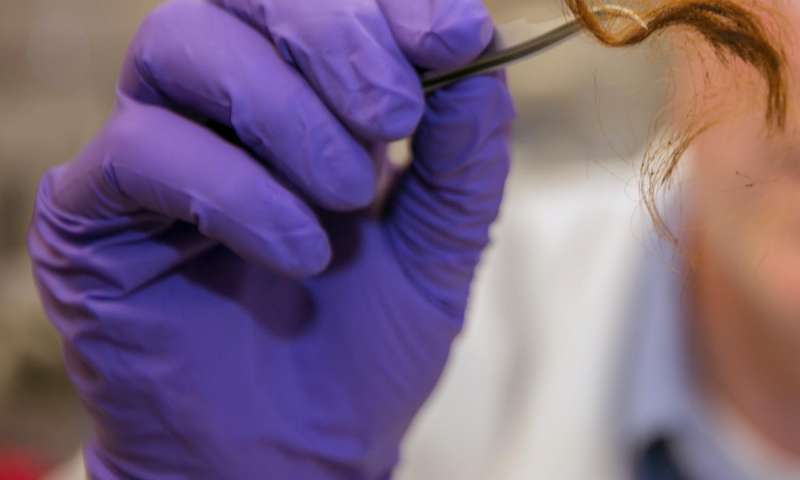Researchers from Lawrence Livermore National Laboratory developed a new test which uses unique protein markers in the hair to identify humans. The hair protein is far more stable and lasts longer than DNA which means it could not only be useful in criminal investigations but archaeological ones as well.
Information encoded in proteins of human hair
“Human identification from biological material is largely dependent on the ability to characterize genetic polymorphisms in DNA. Unfortunately, DNA can degrade in the environment, sometimes below the level at which it can be amplified by PCR. Protein however is chemically more robust than DNA and can persist for longer periods. Protein also contains genetic variation in the form of single amino acid polymorphisms. These can be used to infer the status of non-synonymous single nucleotide polymorphism alleles.” the researchers wrote in PLOS ONE.
Glendon Parker and colleagues tested the effectiveness of hair protein as an identification marker for 66 European-American subjects, 10 subjects with African ancestry, and also six archaeological skeletal remains which were up to 260 years old.
They have found a total of 185 hair protein markers to date. That’s more than enough to provide a unique pattern that would distinguish a person among a population of one million, the researchers wrote. However, criminal investigations require no room for interpretation or error, so Parker and team hope to identify a core set of around a hundred protein markers which should be sufficient to distinguish an individual among the entire world’s population.
“We are in a very similar place with protein-based identification to where DNA profiling was during the early days of its development,” said LLNL chemist Brad Hart, the director of the Lab’s Forensic Science Center and co-author of a paper detailing the work. “This method will be a game-changer for forensics, and while we’ve made a lot of progress toward proving it, there are steps to go before this new technique will be able to reach its full potential.”
DNA can be recovered from hair roots, but not that often. Seeing how hair is one of the most common pieces of evidence perpetrators leave at a crime scene, hair protein identification might be a game-changer in law enforcement.










